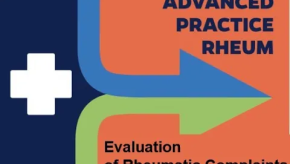
Blogs

Hydroxychloroquine for Everyone
Nearly 25 years ago, while lecturing on best therapies for rheumatoid arthritis (RA), I loudly stated that hydroxychloroquine was “useless” and, deservedly, I was “boo-ed” off stage. My point then was that rheumatologists needed to be aggressive, if not overly aggressive, in treating all RA patients. And my view was that HCQ was representative of under-treatment. I have reconsidered the use of HCQ in RA substantially in the last few years, based on its merit.Best of 2023: New ACR RA-ILD Treatment Guidelines – What Were They Smoking!?
Rheumatoid arthritis related interstitial lung disease (RA-ILD) is common, with symptomatic RA-ILD affecting approximately 8% of RA patients. There is a very limited evidence base supporting treatment and therefore the recent release of ACR guidelines is to be welcomed. However, the published guidelines appear discordant with the best available evidence base.
Screening and Overdiagnosis of ILD in RA
Dr. Michael Putman (Milwaukee, WI) reviews his approach to screening for ILD and RA, the potential for overdiagnosis and how this impacts treatment choices. Does this differ from your approach?Focus on the Fasting Lipid Profile
How best do we communicate CV risk associated with RA to other members of the treating team, most particularly the primary care physicians? After some experimentation, I have come up with an approach that seems to work and which does not take up much time.Comorbidities in RA: Focus on Difficult-to-Treat Disease
The presence of comorbidities naturally complicates treatment choice, patient adherence to medication and patient outcomes, increasing also the risk of making RA ‘difficult-to-treat’.Infections Rheums Should Worry About
With the increasing development and use of new biologics and oral targeted therapies to treat RA and other immune mediated inflammatory diseases, an awareness of infection risk and prevention has become of increasing interest as well. While our patients may be susceptible to many different types of infections depending on immunosuppressive regimen, age and co-morbidities, I’ll highlight a few of the “usual suspects”.Hard Conversations: DMARDs and Malignancy
Cancer is the most difficult DMARD risk to discuss with patients. Few warnings could scare people away from a drug faster than the words “may increase risk of cancer,” yet the risks (even when substantiated) have all been low and may be counterbalanced by the benefits of disease control.Assessing Cardiovascular Risks: The Responsibility of the Rheumatologist
In 2016, EULAR posted recommendations for the management of cardiovascular risks in patients with rheumatoid arthritis and other inflammatory joint diseases. Three overarching principles emerged, but one caught my attention: “the rheumatologist is responsible for CV disease risk management.” It leaves no room for interpretation.














